- remind me tomorrow
- remind me next week
- never remind me
The X Button
Show Downs
by Todd Ciolek,

Was this year's Tokyo Game Show a largely unspectacular outing, a bell tolling the Japanese game industry's funeral with chimes of squeaky anime-girl voices? I didn't go, so I heard no such peals. However, I couldn't help but notice a lack of major announcements. There were a few of note, such as Square's Bravely Default RPG for the 3DS, yet the majority of big names at the TGS just expanded on games that were announced months before. In fact, the biggest surprise of the show was Mommy Tummy, a vest-like apparatus that simulates pregnancy and fascinates the North American press.
But that doesn't bother me so much. I suspect that the Tokyo Game Show's lax performance stems from Japan's developers putting more effort into E3 and the Western market it represents, which leaves the TGS as a place to show off more of what was unveiled at E3. And when it comes to games like Gravity Rush and Project Draco, I'm glad to see more.
NEWS SPECIAL: THE 2011 TOKYO GAME SHOW
GRAVITY RUSH SHAPES UP ON VITA
Conventional action games are in no short supply on the PlayStation Vita, but none lets players toy with a fundamental law of physics. Gravity Rush does. It follows a lean, amnesia-stricken young woman who names herself Kat after a strange feline gives her control over gravity. She traverses Hekseville, a stylish hi-tech city of pointed skycrapers and dusty skies, and her journey doesn't stay grounded: players can suspend gravity at any time, make Kat float around in the air, and then re-orient her by flipping gravity back into effect.

Gravity Rush still lets Kat brawl her way through enemies, but the gravity-switching feature elevates things above mundane play. Instead of spin-kicking blob-headed robots on a single plane, Kat can glide through the air, shifting the fight from a street to the skies, the side of a building, or a passing train. The game uses the Vita's gyro-sensor to adjust the camera during Kat's zero-gravity excursions, and it even seems fun to simply float through the skies, hearing random citizens yelp in shock as you screw around with their gravitation pull. Sorta like Mirror's Edge meets the old NES game Metal Storm. You all played Metal Storm, right?

The characters all have a spare, heavy-shaded anime quality, reminiscent of No More Heroes and El Shaddai, but the backgrounds are a shade more creative, with a strange futurepunk-gothic look to everything. Ordinary cutscenes are shown as comic-book panels, while in-game animations tell of more important events, such as Kat's confrontations with a raven-wearing woman who apparently stepped right out of Cavia's Bullet Witch.
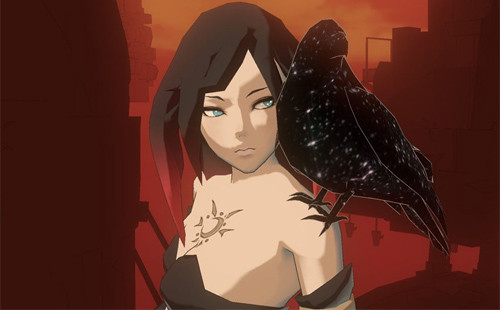
Still in development at Sony's Japan Studio, Gravity Rush was originally slated as a Vita launch title in Japan (where it'll be known as Gravity Daze). The game's release date apparently slipped, though, and it's now looking at a vaguer 2012 arrival.
PROJECT DRACO KEEPS PANZER DRAGOON STYLE, LOSES CONTROLLER
I won't lie: nothing else at the Tokyo Game Show intrigued me as much as Project Draco, the Kinect shooter from Yukio Futatsugi. Though it's not called Panzer Dragoon V, it's in much the same style as Sega's amazing and sadly dormant series. Futatsugi was behind the first three Panzer Dragoon games, and Draco shares the same ideas, plus the influences of Hayao Miyazaki's Nausicaa and the work of Moebius (who contributed art to the first Panzer). There's one thing Draco doesn't share with Panzer Dragoon, however: an ordinary controller.

Project Draco is an exclusive Kinect game to its core, and so it's played only with the sensor's motion controls. As in Child of Eden, players can direct their shots with swiping movements and tilt their body to steer the dragon. Those scaled mounts are raised with the proceeds from successfully completed missions, and customized dragons can be taken online for multiplayer dogfights. The game's scenery looks remarkably polished for a downloadable Xbox Live title, and the dragons mix typical fantasy creatures in with beats seemingly pulled from Panzer Dragoon. It's out in 2012.
SUIKODEN RETURNS AS PSP GAME, CONFUSING RELAUNCH
Many gave up on the Suikoden games. Series creator Yoshitaka Murayama left Konami after Suikoden III, and we recently learned that the team responsible for the rest of franchise disbanded years ago. Then Konami pulled out a surprise at the Tokyo Game Show in the form of Suikoden: The Woven Web of a Century for the PSP.
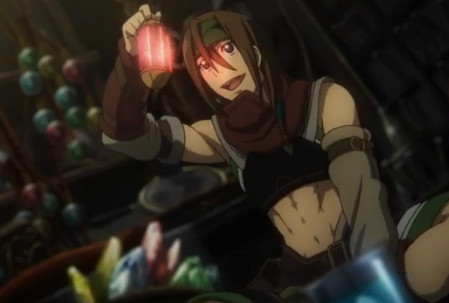
The game's trailer and a pitchline of “a new story of a hundred worlds, a hundred years later” are all that Konami unveiled, leaving plenty of room for speculation. The game's development team is unknown, though Osamu Komuta, director of Suikoden Tierkreis, is currently making Konami's Frontier Gate with tri-Ace. Also unknown is the full range of the game. The trailer shows no familiar characters, suggesting that this is another attempt at relaunching Suikoden. That didn't work for Tierkreis, but perhaps Konami has something better planned.
NI NO KUNI COMING TO NORTH AMERICA If nothing else, Level-5's Ni no Kuni broke new ground by roping in an unlikely collaborator: the normally game-shy Studio Ghibli. With the anime powerhouse's input, the original DS version of this RPG had the atmosphere of a Ghibli piece. The DS game still sits in Japan, but Sony has bigger plans for the PlayStation 3 companion, Ni no Kuni: Queen of the Holy White Ash.
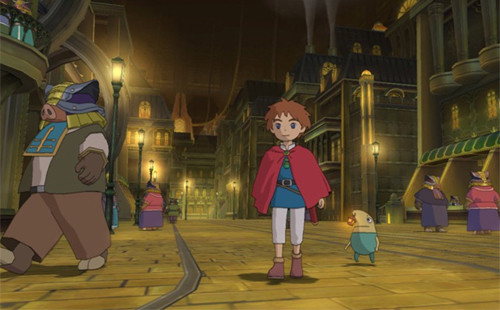
Queen of the Holy White Ash has the same premise as its DS predecessor, in which a boy named Oliver, distraught over the death of his mother, abruptly journeys to a fantasy world where many of the denizens resemble people from Oliver's real life. Grief-born hallucination or not, the world of Ni no Kuni is a lush RPG stage, and Oliver's story evolves in a manner different from the DS game. Trailers for Queen of the Holy White Ash already show some new characters, including a curious green-haired child and the monstrous queen alluded to in the title.
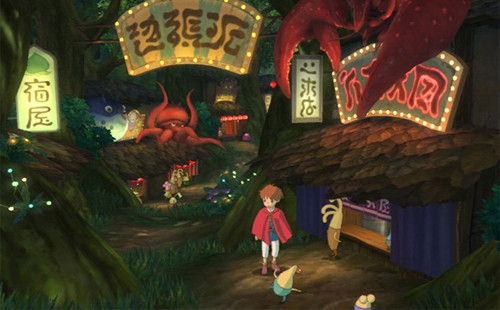
Battles seem to follow the same course as the DS version, where players recruit monsters and position their characters for turn-based combat. Yet the production values have prompted most of Ni no Kuni's hype, as they're polished to the level of a Ghilbi film and backed by a soundtrack from Ghibli composer Joe Hisaishi. Granted, Ghilbi founders Hayao Miyazaki and Isao Takahata have nothing to do with Ni no Kuni, but even the studio's second-string material can still deliver. And American RPG players can see if it Ni no Kuni does when it shows up here next year.
KINGDOM HEARTS: DREAM DROP DISTANCE BRINGS IN NEW-OLD FACES
No, this still isn't Kingdom Hearts 3. It's Kingdom Hearts 3D: Dream Drop Distance. Three Ds. Ha ha. It's also another sub-story in the franchise, with familiar characters and locales from Disney movies and Square Enix games. Following after Kingdom Hearts Coded, Dream Drop Distance finds heroes Sora and Riku facing a revived form of series antagonist Xehanort. They do this across several worlds and Disney sights, including one based on The Hunchback of Notre Dame. Square Enix characters show up as well, and Neku from The World Ends With You is among them; fitting, since artist-director Tetsuya Nomura drew him much like a Kingdom Hearts lead.
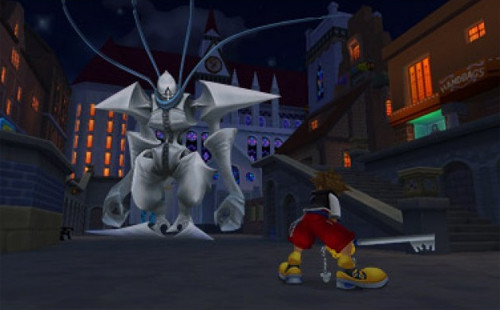
Dream Drop Distance duplicates the three-member parties of Kingdom Hearts, throwing in Dual Link attacks that let players combine the skills of two characters. A new in-battle feature called Holy Rope lets Sora or Riku scoot around the field of combat, catapult up to remote areas, or nail enemies with special attacks. The game also makes good use of Nintendo's “Frankenstick” expansion, which adds a second analog nub to the 3DS and comes in handy for games that need precise camera control. And that's been an issue with Kingdom Hearts from the first game.
TOKYO JUNGLE LOOSES ANIMALS UPON THE WORLD
Tokyo Jungle starts where radical eco-terrorist fantasies begin: the human race is gone, at least from one city, and nature reclaims it. All sorts of animals spill out into the streets, and the player takes control of one species after the other, from lions and foxes and deer to a humble Pomeranian dog. If the game lets you name your animals, that Pomeranian is going to be “Missile.”
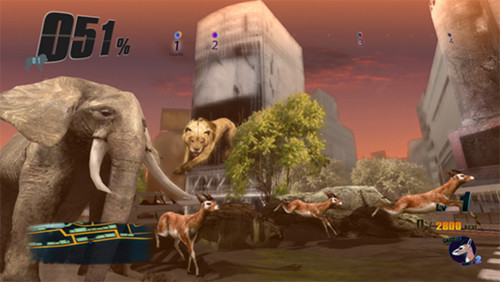
In exploring the ruins of all that humanity made, players level-up their animal avatars. Some are solitary wanderers, while others become more powerful by building up packs. Each animal has a small story arc to follow, though the overall plot of the game will reportedly reveal just why all humans disappeared from the scene. Here's hoping it's something more original than a virus or global warming.
DEAD OR ALIVE 5…EXISTS
What can Tecmo tell us about Dead or Alive 5? Well, it's going ahead without the involvement of series creator Tomonobu Itagaki (who's now a playable character in Saints Row: The Third). It's also going to make greater use of its fighting stages, as shown in a brief trailer where Hayate and Ryu Hayabusa dodge swinging cranes and toppled monuments during their match. That aside, the new fighting game hasn't done much beyond setting a 2012 release date.

The game's promotional poster also confirms that, yes, a woman is in Dead or Alive 5. As for which female character it is, I can't tell. They're all kinda the same in Dead or Alive.
GODS EATER BURST 2 STICKS WITH PSP
Gods Eater Burst was a pleasant surprise earlier this year. It was Monster Hunter with anime stuffing, but it brought a faster pace and a compelling energy that Capcom's market-dominating Monster Hunter often lacks. It caught on well enough in Japan that a sequel's now in the works. In fact, it was probably in the works for some time, since it's coming out on the PSP instead of the Vita.
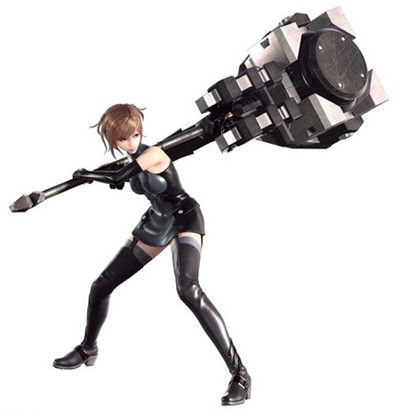
The game's set three years after the first Gods Eater Burst, and it jettisons the original's hand-drawn anime look in favor of…a computer-rendered anime look, similar to a modern Final Fantasy game. Several new weapons join the player's arsenal, including hammers and spears, and all of them can transform into guns or spout enemy-devouring jaws. Gods Eater Burst 2 is out next year in Japan (under its original title, God Eater Burst), and a North American version probably won't happen.
LAYTON VS. PHOENIX SHOWS UP, SET FOR 2012
The unlikely crossover of Professor Layton and Phoenix Wright sounded too good to be true when it was announced last year. And it's still to good to be true, at least for fans who want to play the adventure game in English; the game's not coming here. But there'll be plenty for Japanese fans when Professor Layton vs. Phoenix Wright arrives on the 3DS next year.
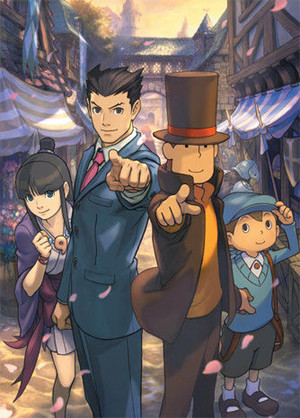
The game's Tokyo Game Show trailer doesn't reveal much more about the game's storyline, which finds Phoenix and his sidekick Maya Fey defending a young woman accused of witchcraft. And this is a medieval trial, complete with easily riled mobs and witnesses in full armor. Fortunately, Layton shows up to solve puzzles and help put things to rights—call me cynical, but I doubt that Layton and Wright will end up on opposite sides of the case. The game also tries to reconcile the differing styles of the two series; Phoenix and Maya are simplified a little for the game's 3-D engine, though Layton looks about the same. Oddly, the supporting characters show a similar divide: the accused witch and a knight look as realistic as Phoenix, but other townsfolk are as exaggerated as Layton. Perhaps that's part of the story.
RESIDENT EVIL 6 TRAILER IS A HOAX, BUT YOU HAVE HD REMAKES
Among all of the trailers shown at the Tokyo Game Show, a spot for Resident Evil 6 sparked the most debate, and that's because it turned out to be fake. The footage is the sort of thing that's easily assembled, too: several lines about bio-organic weapons ravaging the world, then a flash of latitude and longitude that correspond to Thunder Bay in Ontario. Visions of Resident Evil heroes fending off tuque-wearing Canadian zombies and mutant beavers were short-lived, as Capcom soon stated that this trailer wasn't real and other news outlets confirmed that it was never run at the Tokyo Game Show. Resident Evil 6 still remains undetailed, though Capcom is making it, no question.
In the meantime, Capcom launched the HD version of Resident Evil 4 on the Xbox 360 and Playstation 3 this week. Perhaps the highlight of the whole franchise, Resident Evil 4 refashioned the games' survival-horror angle into an over-the-shoulder action game, and the HD version has just about every extra included in the various ports the game received over the years. A similar upgrade of Resident Evil: Code Veronica X arrives as a download next week, even though it was never as impressive as Resident Evil 4. Or most of the other games, come to think of it.
NEXT WEEK'S RELEASES
ATELIER TOTORI: THE ADVENTURER OF ARLAND Developer: Gust
Developer: Gust Publisher: NIS America Platform: PlayStation 3 Players: 1 MSRP: $49.99/$59.99 In some ways, the Atelier series has come a long way from 1997's Atelier Marie—the new Atelier Totori is a 3-D RPG with some relatively high production values. Yet the Atelier series still runs on the same fuel: a novice alchemist learns how to magically create all manner of goods and how to battle through ingredient-collecting quests with the help of goofball allies. As the second chapter in the Arland sub-trilogy, Atelier Totori introduces its title character as a shy young thing studying under Rorona, heroine of the last Arland game. As they hunt around for alchemy components, they're joined by friends, relatives, and even two elfin homunculi paid in desserts. Of course, an Atelier game's appeal is in the details. As part of her ongoing search for her world-exploring mother, Totori visits various parts of Arland, earning points for her adventuring license and finding new supplies along the way. During these forays, she'll sit through the game's battle system, which imposes a few curious rules. Totori's not the combative type, so she's protected by allies, who fend off enemies while she mixes up alchemic aid. What's more, only the alchemist characters can use items in the midst of battle, so there's a very good reason to keep Totori safe. It may seem a bit much that Totori battles monsters so she can make tinctures that blow up on her half the time, but that's the best she can manage until a proper medical school comes to Arland. Totori's available in a standard release as well as a special edition that includes an artbook and soundtrack.
|
ICO AND SHADOW OF THE COLOSSUS COLLECTION  Developer: Team Ico/Bluepoint Games
Developer: Team Ico/Bluepoint Games Publisher: SCEA Platform: PlayStation 3 Players: 1 MSRP: $39.99 The recently burst of PlayStation 2 games remastered in HD is, of course, an attempt to sell us titles like Zone of the Enders 2 and Final Fantasy X all over again. Yet the more optimistic of us compare it to reissuing classic films on Blu-Ray, and no games make that case stronger than Sony's pairing of Ico and Shadow of the Colossus. They're both marvelously restrained, drawing the player in with a spare and deliberately dreamlike appeal right down to the arcane language invented for the games. It's almost worth breaking out the inevitably embarrassing “games as art” discussion just to praise Ico and Shadow of the Colossus. Ico, originally released in 2001, takes place entirely within a desolate tower where Ico, a boy with horns, helps a pale girl named Yorda escape in what may be the longest and most satisfying escort mission video games can offer. Shadow of the Colossus ranges a bit wider, tracking a warrior's attempt to revive a dead woman by slaying eighteen towering stone-and-flesh colossi. The PlayStation 3 compilation presents both games largely as they were on the PlayStation 2, at least as far as gameplay is concerned. This means there's still a deliberately awkward tone. Ico's a clumsy kid as he tries to protect Yorda from shadowy creatures or guide her across gaps, while Shadow of the Colossus makes climbing an angry, seven-story creature nearly as difficult as it would be in real life. However, both titles were sharpened up considerably by Bluepoint Games, and they look quite stunning with HD resolution and consistent frame rates. The latter point is especially beneficial for Shadow of the Colossus, which tended to stutter and lurch in its PlayStation 2 incarnation. Ico, meanwhile, has all of the extras once exclusive to the European PS2 version: a new puzzle, a new weapon, and the option of seeing Yorda's dialogue translated from hieroglyphics during a second playthrough. No major changes were made for this new collection, but I don't think any were needed. |
RUNE FACTORY: TIDES OF DESTINY  Developer: Marvelous
Developer: Marvelous Publisher: Natsume Platform: Nintendo Wii/PlayStation 3 Players: 1 MSRP: $39.99/$49.99 Rune Factory shed its subtitle of A Fantasy Harvest Moon long ago, and it's since wandered off on its own. Tides of Destiny casts the player as two seafaring explorer-farmers, Aden and Sonja, as they search for their apparently destroyed homeland. Along the way, the pair ride a massive golem named Ymir and chart out some thirty different isles full of friendly villagers and welcoming farmland. The game's Harvest Moon traits emerge in the various crops you can tend, and in the chance to marry and start a family. As this Rune Factory offers male and female leads, players can choose from either end side of the fence—or they can bring Aden and Sonja together for that old childhood-friends cliché. Dating and farming supply only part of Tides of Destiny, as it's a fantasy RPG for the rest of the time. Monsters abound on the various islands, and the game's new jumping maneuvers and Rune Abilities improve on the previous Rune Factory titles. Several characters from Rune Factory Frontier make cameos, and the game even allows one-night temporary marriages to some supporting characters (the Harvest Moon version of a Vegas wedding, if you will). And for PlayStation 3 owners, there's also the option to use the PlayStation Move motion controller, presumably in combat and not in marriage. |
SOLATOROBO: RED THE HUNTER Developer: CyberConnect2
Developer: CyberConnect2 Publisher: XSEED Games Platform: Nintendo DS Players: 1 MSRP: $34.99 Solatorobo is exactly the sort of game that slips through the cracks: it's from a largely unknown series, it's showing up on a rapidly fading system, and some might even ignore it due to the animal-people characters. And it shouldn't be ignored, because it's a cheerful, well-fashioned action-RPG set in a world of floating isles and Miyazaki-inspired flying robots. A loose sequel to the Playstation's Tail Concerto (and part of the fledgling Little Tail Bronx series), Solatorobo follows dog-man Red Savarin and his aerial mecha on assorted bounty-hunting quests, most of which involve a secretive cat-woman and a mystery that spans their whole civilization of doglike and catlike people (and some actual humans, it seems). Along the way, Red explores on foot and in his combat-ready robot, with both the canine hero and his ride transforming to gain new abilities in battle. Time in between action-oriented levels can be spent in air races or in cities where everything's just a little bit French. Many cries of anguish were heard this July when Capcom shuttered development of Mega Man Legends 3, the latest in the charmingly cartoonish line of Mega Man spin-offs. Well, Legends 3 isn't coming back, but Solatorobo's the same sort of game, as the colorful characters evoke the more innocent, Ghibli-derived side of modern anime. It crams some rather impressive style into the small DS screen, with character art by Nobuteru Yuuki and music from lesser-known (but no less talented) composers Seizo Nakata, Chikayo Fukuda, and Kenzi Nagashima. XSEED also put together a rather nice deal for North America, seeing as how we're getting the game well after Japan and Europe did. The first print run of Solatorobo comes with a soundtrack CD, and all of the side quests, which were downloadable extras in other regions, are included in the U.S. version. |
discuss this in the forum (20 posts) |
this article has been modified since it was originally posted; see change history